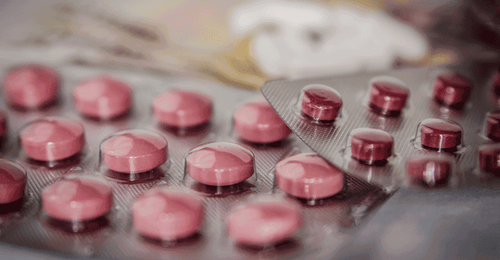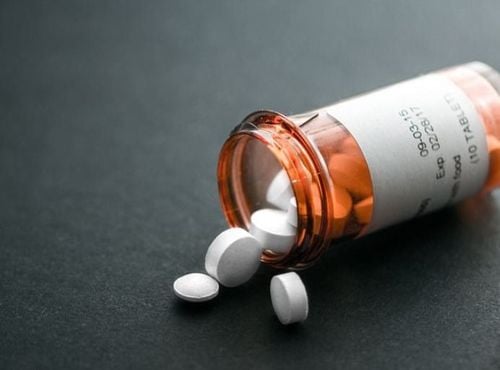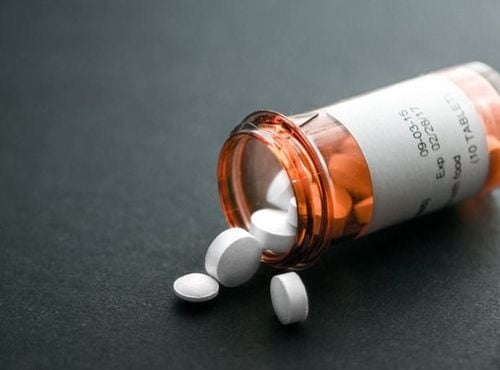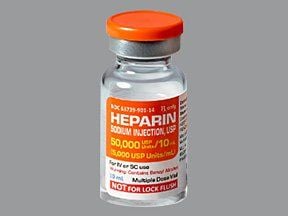This is an automatically translated article.
Bivalirudin is used to reduce blood clotting and help prevent harmful blood clots from forming in the blood vessels. It is used for patients who are having certain heart and blood vessel procedures, such as angioplasty. Let's learn about the drug Bivalirudin through the article below.
1. What is Bivalirudin?
Generic name (Active ingredient): Bivalirudin
Drug type: Antithrombotic drug, direct thrombin inhibitor.
Drug form and strength: Concentrated powder for solution for injection or infusion: 250mg.
Indications:
Bivalirudin is indicated as an anticoagulant in patients undergoing percutaneous coronary intervention (PCI), including patients with ST-segment elevation myocardial infarction (STEMI) undergoing primary PCI. broadcast. Bivalirudin is also indicated for the treatment of adult patients with unstable angina/non-ST-elevation myocardial infarction (UA/NSTEMI) who are scheduled for urgent or early intervention. Bivalirudin should be taken with aspirin and clopidogrel. Contraindications:
Hypersensitivity to the active substance or any of the excipients of the drug. Major bleeding or increased risk of bleeding due to coagulopathy and/or irreversible coagulopathy. Severe uncontrolled hypertension. Subacute infective endocarditis. Severe renal impairment (GFR < 30 ml/min) and in dialysis-dependent patients. Pharmacodynamics:
Bivalirudin is a direct and specific thrombin inhibitor that binds to both the catalytic and anionic binding sites of fluid phase and clot thrombin.
Thrombin plays a central role in thrombus formation, acting to cleave fibrinogen into fibrin monomers and activate factor XIII to factor XIIIa, allowing fibrin to develop a covalent cross-linking framework treatment to stabilize thrombosis. Thrombin also activates factors V and VIII, promotes further thrombin generation, and activates platelets. Bivalirudin inhibits these effects of thrombin.
The binding and action of bivalirudin to thrombin is reversible when thrombin cleaves the bivalirudin binding, Arg3-Pro4, leading to restoration of thrombin active site function. Thus, bivalirudin initially acts as a completely non-competitive inhibitor of thrombin, but converts over time to a competitive inhibitor allowing the initially inhibited thrombin molecules to interact with other thrombin molecules. other coagulation substrates and coagulate if necessary.
Pharmacokinetics:
Absorption: The bioavailability of intravenous bivalirudin is absolute and has an immediate effect. The mean steady-state concentration of bivalirudin following continuous intravenous infusion at a dose of 2.5 mg/kg/hour was 12.4 μg/ml.
Distribution: Bivalirudin is rapidly distributed between plasma and extracellular fluid. The steady-state volume of distribution is 0.1 l/kg. Bivalirudin is not bound to plasma proteins (other than thrombin) or to red blood cells.
Metabolism: As a peptide, bivalirudin undergoes catabolism into its component amino acids, with subsequent amino acid recycling in the body. Bivalirudin is metabolized by proteases, including thrombin. About 20% of bivalirudin is excreted unchanged in the urine.
Elimination : Elimination is by first-order procedure with a terminal half-life of 25 ± 12 minutes in patients with normal renal function. The corresponding clearance is about 3.4 ± 0.5 ml/min/kg.
2. Dosage and usage of Bivalirudin
Bivalirudin should be used by physicians experienced in the treatment of acute coronary disease or in coronary interventional procedures.
Adults:
Patients undergoing PCI, including primary PCI:
The recommended dose of bivalirudin for patients on PCI is an intravenous loading dose of 0.75 mg/kg body weight, immediately followed by a loading dose of 0.75 mg/kg body weight. IV infusion at a rate of 1.75 mg/kg body weight/hour for the least duration of the procedure. The infusion of 1.75 mg/kg body weight/hour may be continued for up to 4 hours after PCI and in patients with STEMI should be continued for up to 4 hours after PCI. The infusion may be continued at a lower dose, 0.25 mg/kg/hour, for another 4 to 12 hours as clinically necessary.
Patients with unstable angina/MI without ST-segment elevation (UA/NSTEMI):
The recommended starting dose of bivalirudin for patients with acute coronary syndrome (ACS) is intravenous 0.1 mg/kg pulse, then 0.25 mg/kg/hour infusion. Patients in whom drug therapy is decided may continue infusion of 0.25 mg/kg/hour for up to 72 hours. If these patients undergo PCI, an additional 0.5 mg/kg of bivalirudin should be injected prior to the procedure and the infusion dose of bivalirudin should be increased to 1.75 mg/kg/hour for the duration of the procedure. After PCI, the infusion dose should be reduced to 0.25 mg/kg/hour and may be continued for 4 to 12 hours if clinically necessary. For patients undergoing pumpless coronary artery bypass graft (CABG) surgery (without the use of extracorporeal circulation), intravenous bivalirudin should be continued until the time of surgery. Immediately prior to surgery, a dose of 0.5 mg/kg intravenously (bolus) should be administered followed by an intravenous infusion of 1.75 mg/kg/hour for the duration of surgery. For patients undergoing pumped CABG surgery (using extracorporeal circulation), intravenous bivalirudin should be continued up to 1 hour before surgery, after which the infusion should be discontinued and the patient treated with heparin. unfractionated (UFH). Concomitant use with other anticoagulant therapy:
In STEMI patients undergoing primary PCI, standard pre-hospital adjuvant therapy should include clopidogrel and possibly early use of UFH. Patients can be started on bivalirudin 30 minutes after discontinuing intravenous unfractionated heparin, or 8 hours after discontinuing subcutaneous low-molecular-weight heparin. Bivalirudin may be used together with GP IIb/IIIa inhibitors. Children:
There are currently no indications for the use of bivalirudin in children under 18 years of age.
Other subjects
Patients with renal impairment:
In patients with mild or moderate renal impairment bivalirudin dose should not be adjusted for acute coronary syndrome (0.1 mg/kg bolus/0.25 mg/kg/hour infusion) ). Patients with moderate renal impairment (GFR 30 - 59 ml/min) undergoing PCI (whether or not being treated with bivalirudin for acute coronary syndromes) should receive a lower infusion rate: 1, 4 mg/kg/hour. The bolus dose did not change. Patients with hepatic impairment: No dose adjustment is required.
Elderly: Increased awareness is needed due to the high risk of bleeding in the elderly due to impaired renal function. Dosage adjustment for this age group should be based on renal function.
3. Note when using Bivalirudin
Bivalirudin is not for intramuscular administration. Patients must be carefully monitored for symptoms and signs of bleeding during treatment, especially if bivalirudin is combined with another anticoagulant. Combined use of anticoagulant medicinal products may increase the risk of bleeding. In patients on warfarin who are treated with bivalirudin, monitoring (INR) should be considered to ensure that the INR returns to pre-treatment levels after bivalirudin is discontinued. Acute stent thrombosis (< 24 h) has been observed in STEMI patients undergoing primary PCI and managed with Targeted Revascularization (TVR). Most of these cases are not fatal. This increased risk of acute stent thrombosis was observed during the first 4 hours after the end of the procedure in patients who discontinued the bivalirudin infusion at the end of the procedure or continued the infusion at a reduced dose of 0.25 mg/kg. /hours. In pregnant women:
There are limited data on the use of bivalirudin in pregnant women. Animal studies are incomplete on the effects of the drug on pregnancy. Therefore, bivalirudin should not be used during pregnancy unless clinically necessary for the mother.
In lactating women:
It is not known whether bivalirudin is excreted in human milk. Bivalirudin should be used with caution in nursing women.
Precautions while driving and operating machines
Bivalirudin has no or negligible influence on the ability to drive and use machines.
4. Bivalirudin side effects
Very common: Minor bleeding at any site.
Common: Severe bleeding, decreased hemoglobin.
Uncommon :
Thrombocytopenia, anemia. Hypersensitivity, including anaphylactic reactions and shock. Headache, hematoma, low blood pressure, nosebleed, oropharyngeal hemorrhage. Gastrointestinal bleeding, retroperitoneal hemorrhage, gingival hemorrhage, nausea. Blood in urine. Rarely Increased INR, intracranial hemorrhage, ear hemorrhage. Myocardial infarction, angina pectoris, coronary thrombosis, pericardial hemorrhage, bradycardia, ventricular tachycardia. Rash, urticaria, back pain, pulmonary hemorrhage.
5. Management of overdosage and missed dose of Bivalirudin
Cases of overdose 10 times the recommended dose have been reported in clinical trials. Single doses of bivalirudin up to 7.5 mg/kg have also been reported. Bleeding has been reported in cases of overdose.
Treatment of Overdose:
In the event of an overdose, treatment with bivalirudin should be discontinued immediately and the patient closely monitored for signs of bleeding.
In case of major bleeding, treatment with bivalirudin should be stopped immediately. There is currently no specific antidote for bivalirudin, however, bivalirudin can be cleared by hemodialysis.
Missed dose:
Bivalirudin is only used when needed, so there is no daily dosing schedule.
6. Drug interactions
Interactions with other drugs
Combined use with anticoagulant medicinal products (heparin, warfarin, thrombolytics or antiplatelet agents) may increase the risk of bleeding.
Drug interactions can change how the drug works or increase the effect of side effects. This document does not cover all possible drug interactions. Write a list of all the medicines you are taking (including prescription, nonprescription and dietary supplements) and show them to your doctor or pharmacist.
Please dial HOTLINE for more information or register for an appointment HERE. Download MyVinmec app to make appointments faster and to manage your bookings easily.













